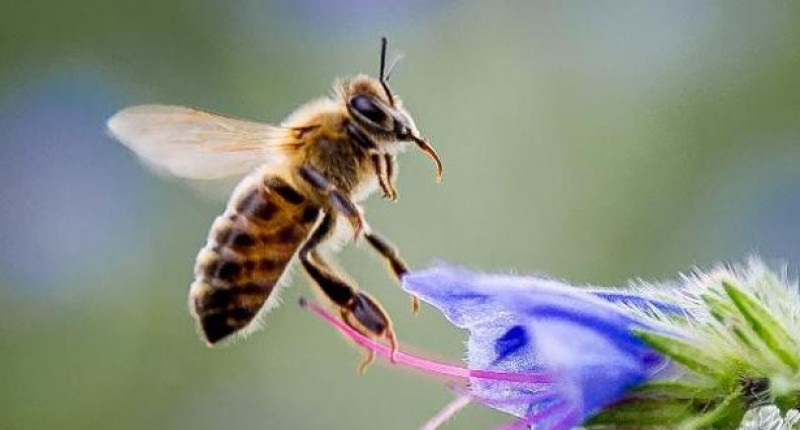You might remember getting your first car – but would be hard pressed to give the right day or time of year – swearing that it was April while the bill of sale says that it was June, but you’re pretty sure that first date gone wrong was with the new car you bought in April. If any of this sounds familiar at all, it’s called conflating your memory. People have actually been known to remember things different from how they happened, or they recall events that hadn’t happened at all.
Manufactured memories aren’t just unique to people, however. Scientists at MIT two years ago induced false memories of trauma in lab mice for a study. A year later, with the use of light, they were able to manipulate the brains of their test subjects, turning their painful memories into more pleasant ones.
Now, a new experiment at Queen Mary University of London has shown that this plasticity of memory exists in insects too. After performing an experiment that would make Pavlov proud, the researchers Kathryn Hunt and Lars Chittka concluded that bumblebees will sometimes fuse certain details of past memories into newer ones. The research was published Friday in Current Biology.
“I suspect the phenomenon may be widespread in the animal kingdom,” researcher Dr. Chittka said in a written statement to the Christian Science Monitor.
Something of this nature seems a bit difficult to carry out – gauging what mice think is hard enough, let alone a stinging insect. Yet, several years ago, scientists also found that bees were capable of recognizing human faces – using the same internal mechanisms that allow them to recognize different flowers. To do their research, Chittka and Dr. Hunt first classically trained the bumblebees, giving them a small reward for visiting two artificial flowers. One was solid yellow, while the other contained rings of black. This was setting up a control. As long as the bee landed on both flowers, it was still given an offering of sugar. After the trial, the bees were presented with a choice of either the yellow or striped flower types, but the researchers threw in a third new choice. The third combines characteristics of the first two, mixing both yellow-and-white rings. On the first day, the bees consistently landed on the first two flowers, the ones that offered a reward.
Within one to three days following their initial training, something different happened – the bees became confused incorrectly flew to the yellow-and-white flower (on up to 50 percent of the tests). While they had never seen such a pattern, they internally associated the stripes with the reward, combining their previous knowledge to form a new memory.
“Bees might, on occasion, form merged memories of flower patterns visited in the past,” Chittka said. “Should a bee unexpectedly encounter real flowers that match these false memories, they might experience a kind of deja-vu and visit these flowers expecting a rich reward.”
Because bumblebee brains have a rather small capacity, Chittka suspects that these manufactured memories are actually shorthand notes to the brain of what is important to remember – rewards being produced by visiting both a striped and a yellow flower. Both ideas quickly become condensed into one.
“In bees, for example, the ability to learn more than one flower type is certainly useful,” Chittka said, “as is the ability to extract commonalities of multiple flower patterns. But this very ability might come at the cost of bees merging memories from multiple sequential experiences.”
Chittka has been researching memory in bumblebees for over two decades. As they can be raised in a lab setting, they make ideal test subjects.
Don’t let the name fool you. “They are [also] exceptionally clever animals that can memorize the colors, patterns, and scents of multiple flower species – as well as navigate efficiently over long distances,” Chittka said.
While studies done in the past assumed animals had been incapable of performing tasks when they failed to do them in clinical tests, Chittka’s research is one of the first to make patterns out of the mistakes. What it reveals is that many animals have a mechanism for their memories that may be substantially more complex than we imagined.
“I think we need to move beyond understanding animal memory as either storing or not storing stimuli or episodes,” Chittka said. “The contents of memory are dynamic. It is clear from studies on human memory that they do not just fade over time, but can also change and integrate with other memories to form new information. The same is likely to be the case in many animals.”
Hopefully, the research will lead to a better understanding of what false memories really are and why we sometimes cling to them so tightly. Think of them as evolutionary links to a diverse and distant past, rather than a brain misfire. Most of all, think of why you take in the particular details you remember, and looking at what you left out may enhance the past experience you had, letting you relive it to an extent.
“Errors in human memory range from misremembering minor details of events to generating illusory memories of entire episodes,” Chittka said. “These inaccuracies have wide-ranging implications in crime witness accounts and in the courtroom, but I believe that – like the quirks of information processing that occur in well known optical illusions – they really are the byproduct of otherwise adaptive processes.”
|
James Sullivan
James Sullivan is the assistant editor of Brain World Magazine and a contributor to Truth Is Cool and OMNI Reboot. He can usually be found on TVTropes or RationalWiki when not exploiting life and science stories for another blog article. |

